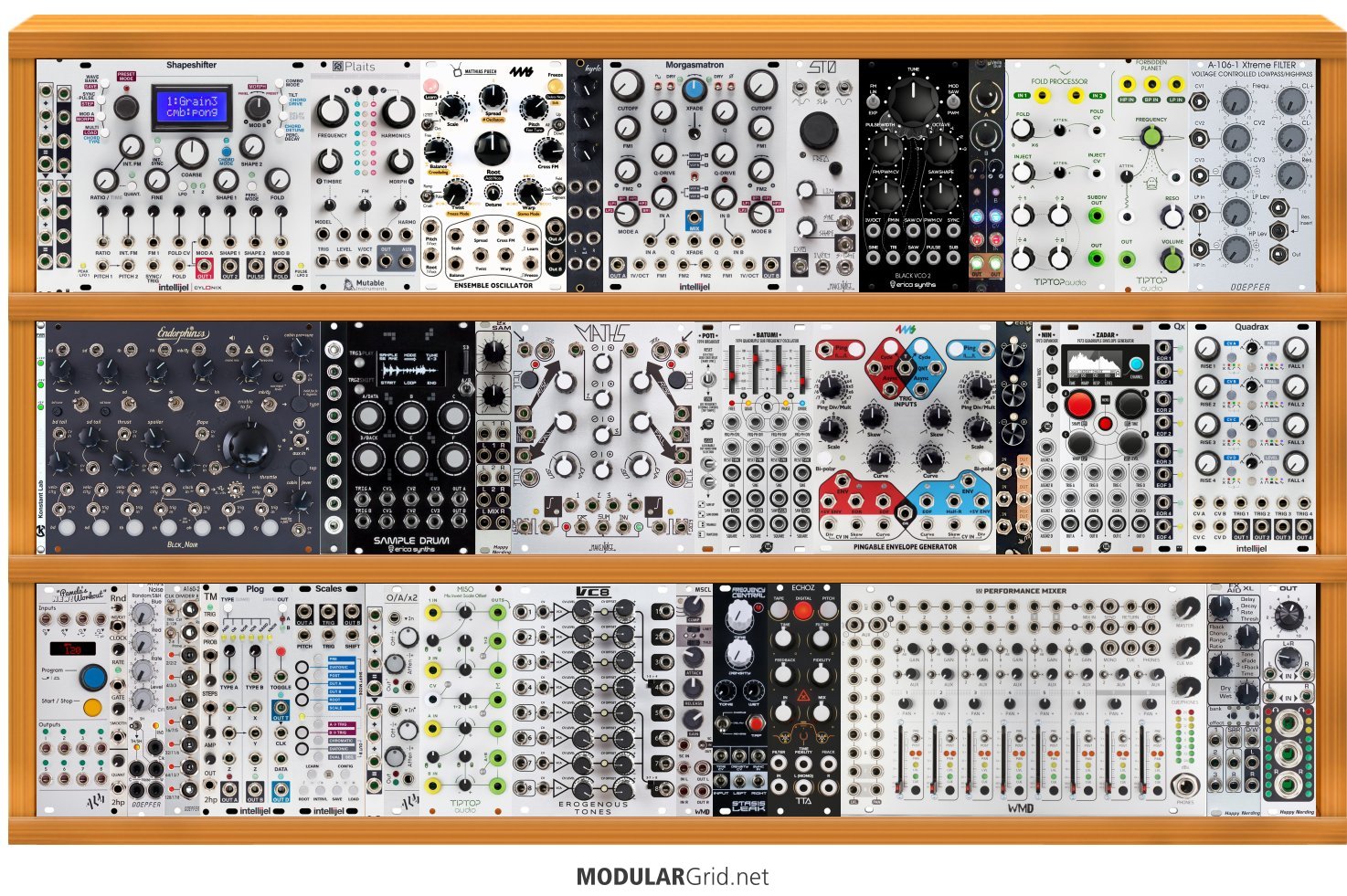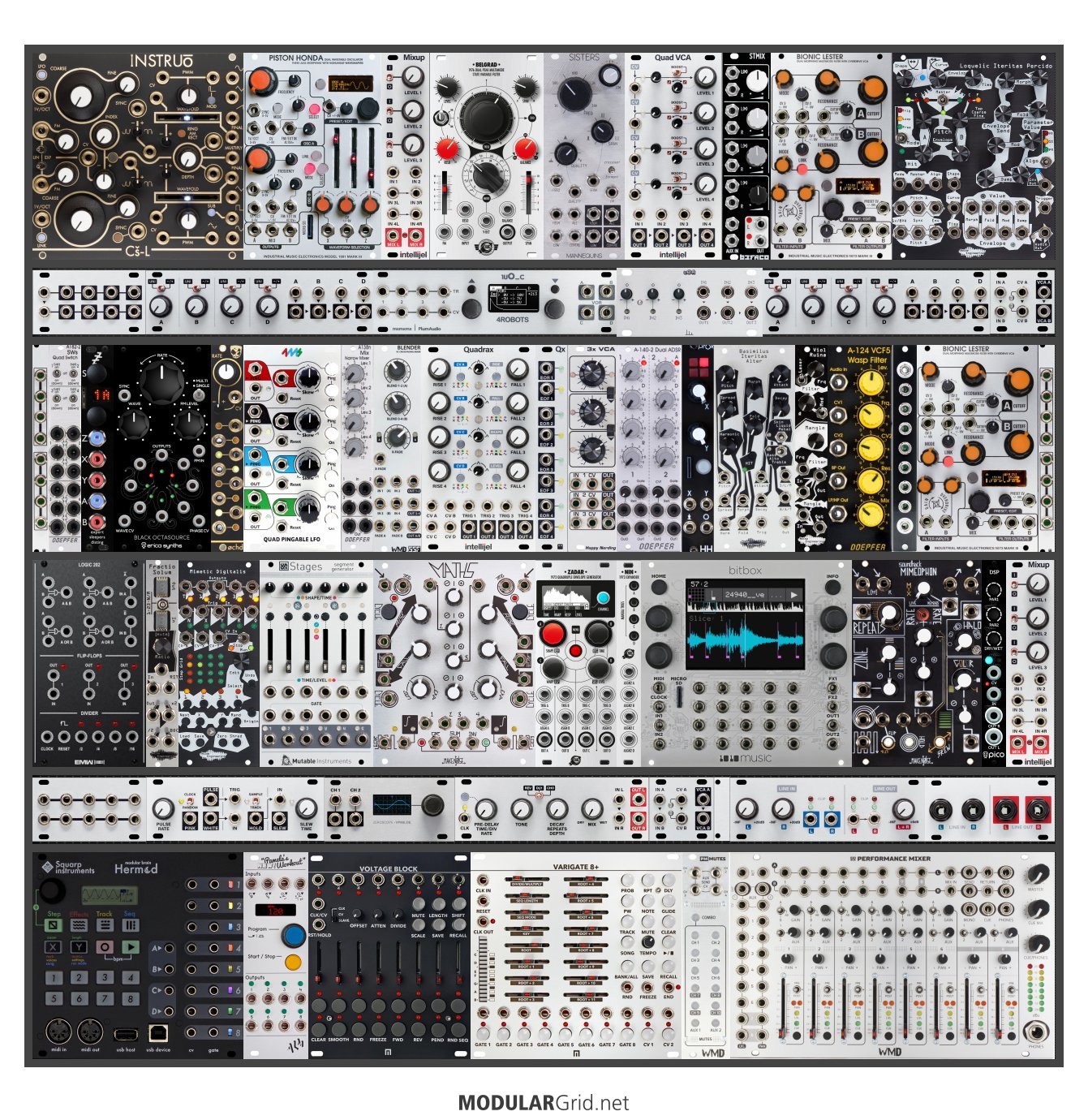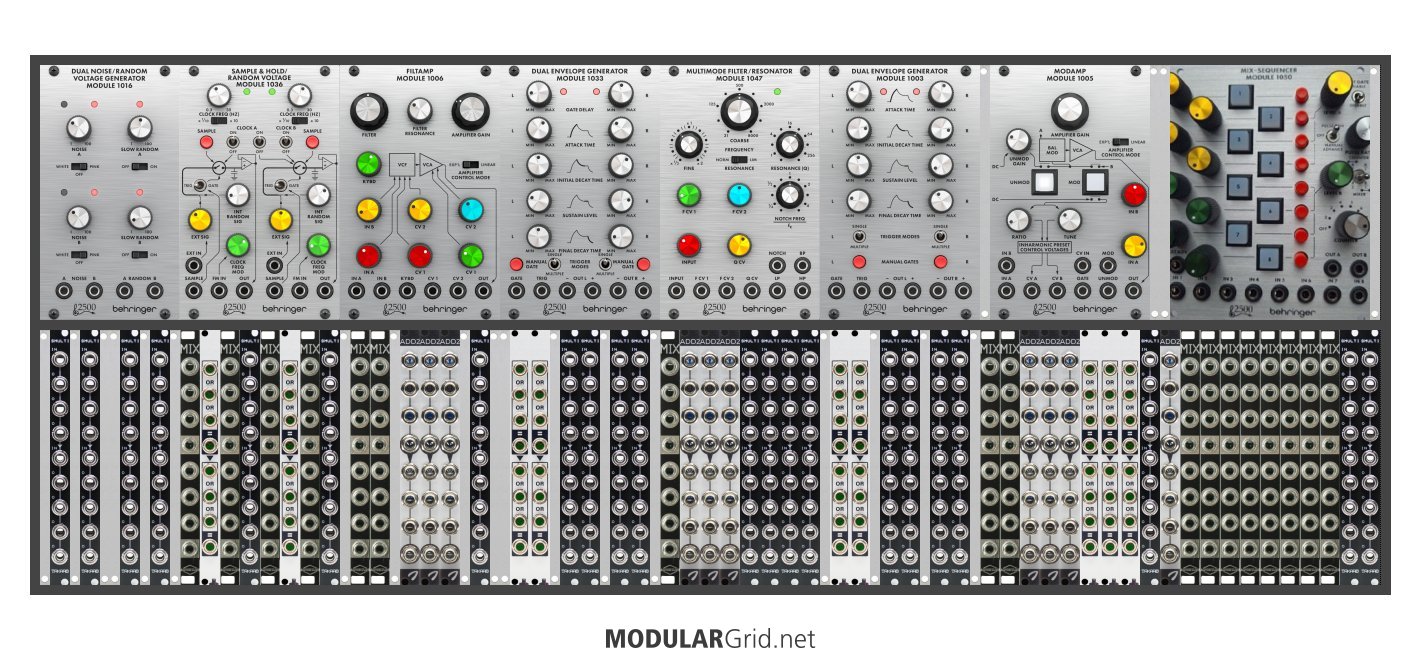LFOs are actually a lot more useful than they appear to be, and there ARE some modules that pair with them for some neat results...
First up, any synth that has several of these needs something along the lines of the Intellijel Triplatt. This is a set of three attenuverters that also works as a DC-coupled mixer. Now, why attenuverters? Well, what they'll do is to invert an inputted signal, and inverting an LFO means that you'll get the 180 degree OPPOSITE waveform. Mix this in with the original, and you get cancellation. But mixing it in at levels that don't quite cause 1:1 phase cancellation lets you "smooth out" the original waveform...which is very useful if you're combining several LFOs to create a complex modulation signal.
VCAs combined with LFOs lets you have sounds autofading in and out when you connect the LFO to the VCA's CV input. And if you use something like a sawtooth wave to modulate this, the results will be like a simple envelope generator connected to the VCA. For generative musical forms, that's really useful.
Then there's quantizers. Most of the time, we look at these as being used for extracting pitch CVs from the CV outputs of sequencers. But you can also use them with LFOs to generate CVs that run up and down scales. Even better, if the quantizer has the ability to specify scales/notes, you can make these skitter up and down (depends on the waveform you use) in tune with the rest of the audio coming out of the synth. With a pair of LFOs mixed properly, you can arrive at some very Shepard-esque pattern generation this way (one of my fave ARP 2600 tricks, btw, using the EGs in a "looping" manner).
BUT WAIT, THERE'S MORE! Comparators are a natural pairing with LFOs. What these do is to wait until the incoming signal level exceeds a level you set, then when that happens, they output either a gate or trigger. This lets you do all sorts of on/off control tricks with the regularity of the repeating LFO cycles. Better still are special types of these called "window" comparators...these have several voltage thresholds that you set, and a good one will output g/t signals when the level is below the bottom limit, and above the top limit...AND when the waveform's voltage crosses the "window" set by those two limits. Again, for generative work, damned essential!
FYI, comparators also play nice with logic...as do square/pulse waves directly out of an LFO. The typical Boolean logic tricks apply here...OR = one OR the other input can make the logic gate output a trigger or gate, AND = one AND the other (both on at the same time), NOR = neither on at the same time, and NAND = outputs only when neither incoming signal is on at the same time. These rock like you wouldn't believe for creating strange crossrhythmic patterns...again, super-useful for generative.
OK...so if they're just really slow VCOs (they are), can you do anything VCO-ish with them? Again, the answer is HELLZYEAH...you can wavefold LFO signals with the right sort of wavefolder. For example, EMW has a module called the CV Folder 3x...a triple wavefolder optimized for modulation and CV signals. And yes, there's others...such as the Elby "Mangler", etc. Couple this with some of the above, and you're primed for stochastic waveform MAYHEM. And there's one thing like this that's not exactly VCO behavior, but related...minimum/maximum-type discriminators, which take two or more incoming signals and then outputs the selected CV level, minimum, maximum, and sometimes also the median average of the inputs.
Oh, and yes...they do work with VCAs, but note that you'll need DC-coupled ones (which are usually linear) to deal with the LFO signals. A VCA in the output path of an LFO lets you do things like applying an envelope to the signal, so that you get level rise/falls while the waveform from the LFO remains the same. If you've seen the gatefold Brit cover for the first two Kraftwerk albums, the spectacular waveform on the front is the result of this exact usage. This lets you control the amount of modulation coming out of the LFO (or several, mixed) with any CV.
Can they turn things on and off? Sure can...just use a square or pulse output, feed that to an audio VCA's CV input. LFO cycles up, VCA turns on (or off...depends on how you've patched it and with what). Cycle down, audio off.
How about transposition? Yep...if you're using an LFO with a quantizer and your rig also has an adder, just feed the quantized LFO signal into an adder with the CV for your VCOs. This will result in the quantizer's voltage levels being added arithmetically to the pitch CV...and if you set the quantizer properly, you can get behavior that's sorta like the old "Juno Hoover" sound of rave tracks of old, especially if you drop a slew limiter into the quantizer output before it hits the adder.
Now, there's a few things that can behave in a very LFO-ish way...anything based on the Serge Universal Slope Generator (such as Maths, etc) will do this...but then, you'd ALSO get CV control over the rise and fall times, with that determining the duty cycle of the "LFO" here. Lots of two-stage EGs can act like this, too...Intellijel's Quadrax comes to mind immediately. There's also a bunch of interesting "specialized" LFOs, too...check out Ladik's L-122.
Yeah, these things are NO JOKE...in fact, they're the backbone of modulation alongside envelope generators. You CAN have too many LFOs...but you'll only figure out how much is too much when you run out of LFOs to screw with everything else. If that happens, you clearly don't have enough! ;-)



